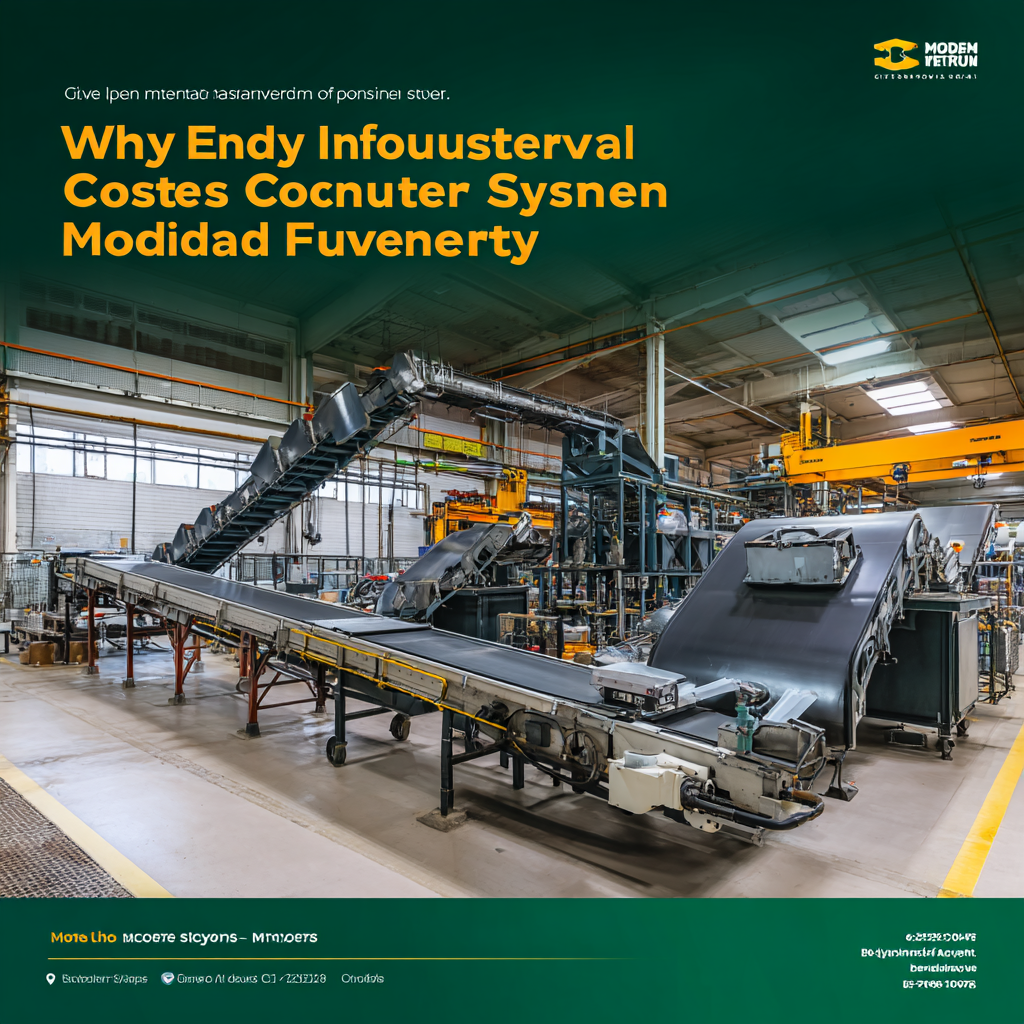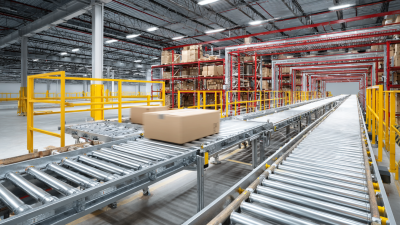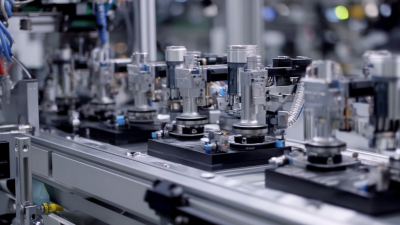The modern manufacturing landscape is defined by its need for efficiency and precision, with Industrial Conveyor Systems playing a pivotal role in achieving these objectives. As stated by Dr. Emily Carter, an expert in industrial automation, "Effective material handling through Industrial Conveyor Systems is not just a convenience; it's a necessity for staying competitive in today's fast-paced market." This insight underscores the vital importance of these systems in streamlining processes, reducing labor costs, and enhancing production capacity.

In recent years, companies have increasingly recognized that investing in advanced Industrial Conveyor Systems can lead to significant improvements in operational efficiency. These systems not only facilitate the seamless movement of materials throughout the production line but also minimize the risk of errors associated with manual handling. By integrating technology with conveyor systems, manufacturers can optimize workflows and ensure that products are manufactured and delivered with greater speed and accuracy.
As industries evolve in response to growing consumer demands and technological advancements, the implementation of robust Industrial Conveyor Systems becomes essential. Embracing these innovations allows manufacturers to adapt swiftly to market changes, ensuring they remain at the forefront of their sectors while enhancing productivity and profitability.
The evolution of industrial conveyor systems has played a pivotal role in the transformation of modern manufacturing. Initially, conveyor systems were rudimentary, relying on manual labor and simple mechanical devices to transport goods across production lines. However, as the demand for efficiency surged, innovations emerged, leading to more sophisticated conveyor technologies, such as automated and modular systems. These advancements have not only sped up production rates but also significantly minimized the risk of human error, showcasing the shift from labor-intensive processes to highly automated environments.
In today’s manufacturing landscape, the significance of these conveyor systems cannot be understated. They facilitate seamless integration of various stages of production, ensuring a smooth flow of materials and components. This interconnectedness enhances operational efficiency, reduces downtime, and optimizes resource management. Furthermore, the adaptability of modern conveyor systems allows manufacturers to customize layouts to meet specific production needs, resulting in greater flexibility. As industries continue to embrace automation and lean manufacturing principles, conveyor systems remain an essential backbone, driving competitiveness and productivity in the global market.
| Category | System Type | Applications | Efficiency Gains (%) | Maintenance Frequency (Months) |
|---|---|---|---|---|
| Belt Conveyors | High Speed | Food processing, package handling | 20% | 6 |
| Roller Conveyors | Gravity | Warehousing, assembly lines | 15% | 12 |
| Chain Conveyors | Heavy Duty | Automotive, bulk handling | 25% | 8 |
| Pneumatic Conveyors | Vacuum | Powder transport, chemical processing | 30% | 3 |
| Forklift Conveyors | Automated | Distribution centers, manufacturing | 18% | 10 |
Industrial conveyor systems are pivotal for enhancing production efficiency in modern manufacturing environments. One key feature of these systems is their ability to streamline material handling processes. By automating the movement of goods between different stages of production, conveyor systems reduce manual labor and minimize the risk of human error, thus increasing overall productivity. This automation allows factories to achieve higher output rates while maintaining consistent quality, which is essential for meeting rising market demands.

Another significant feature is the capability for customization to meet specific operational needs. Different industries may require unique conveyor designs based on the type and layout of their production lines. For instance, conveyors can be tailored with varying speeds, configurations, and materials to accommodate diverse product types and sizes. This adaptability not only enhances the efficiency of the production process but also enables manufacturers to quickly respond to changes in consumer preferences or production orders.
Overall, the integration of advanced conveyor systems is critical for achieving competitive advantage in today’s fast-paced manufacturing landscape.
The future of conveyor systems in 2025 is set to be significantly influenced by innovative technologies that enhance manufacturing efficiency. One of the most promising developments is the integration of artificial intelligence and machine learning into conveyor operations. These technologies can optimize routing and scheduling in real time, enabling manufacturers to adapt to changing production demands swiftly. By analyzing data from various sources, AI can predict potential bottlenecks, leading to improved workflow and minimized downtime.

Another key innovation is the incorporation of IoT (Internet of Things) devices in conveyor systems. Smart sensors and connected devices allow for continuous monitoring of equipment health and performance. This proactive approach to maintenance not only reduces the risk of unexpected failures but also improves overall operational efficiency. With real-time insights, manufacturers can make informed decisions about resource allocation, production speed, and inventory management, paving the way for more agile and responsive manufacturing environments.
The convergence of these technologies will redefine the landscape of industrial conveyor systems, driving toward unparalleled efficiency and productivity in modern manufacturing.
Integrating conveyor systems into modern manufacturing processes is essential for enhancing efficiency and productivity. Implementing these systems requires careful planning and consideration of several factors. First, a thorough assessment of the production workflow is crucial. Understanding the materials flow, processing times, and bottlenecks allows manufacturers to design a conveyor system that optimally integrates with existing workflows.
Tips: When analyzing your workflow, consider engaging employees who operate the machines daily. Their insights can identify potential issues and ensure the conveyor system meets actual operational needs.
Next, flexibility is key. As manufacturing demands change, so too must the conveyor systems. Choosing modular and scalable conveyors can adapt to different product types and volumes without significant overhauls. This adaptability not only saves costs but also minimizes downtime during transitions.
Tips: Look for conveyor systems with adjustable modular components to accommodate future expansions or changes in product lines. This foresight can lead to significant long-term savings.
By focusing on these strategies, manufacturers can seamlessly integrate conveyor systems that significantly enhance productivity and workflow efficiency in today’s fast-paced industrial landscape.
Investing in industrial conveyor systems can significantly enhance manufacturing efficiency, making the evaluation of their return on investment (ROI) crucial for long-term operations. Conveyor systems streamline the movement of materials and products throughout the production line, reducing manual handling, minimizing errors, and increasing safety. By calculating the ROI, companies can measure the cost savings and productivity gains that result from implementing these systems, justifying the initial expenditure.
Tips for evaluating ROI include conducting a thorough cost analysis of labor savings, minimizing downtime, and reducing product damage. Track metrics such as throughput rates and cycle times before and after installation to quantify improvements. Additionally, consider the longevity of the equipment and maintenance costs as part of your evaluation; a well-maintained conveyor system can provide years of reliable service, thereby increasing its overall value over time.
Another tip is to benchmark against similar operations in your industry to assess potential improvements. Understanding what competitors achieve can help you set realistic goals and expectations for your conveyor investment. By proactively analyzing these factors, manufacturers can ensure that their conveyor systems deliver the efficiency needed to compete in today's fast-paced market.






